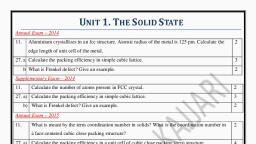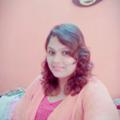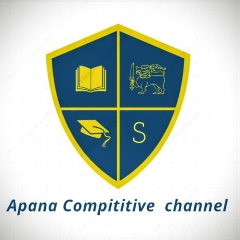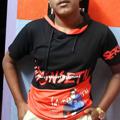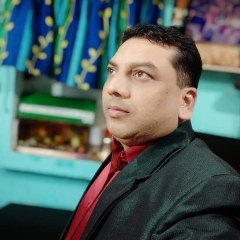Question 1 :
Lithium metal crystallises in a body centred cubic crystal. If the length of the side of the unit cell of lithium is 351 pm, the atomic radius of the lithium will be :
Question 2 :
A metal crystallises into a lattice containing a sequence of layers as AB AB AB _______. What percentage of voids are left in the lattice?
Question 3 :
A metallic element crystallises into lattice containing a sequence of layers of <img style='object-fit:contain' src="https://storage.googleapis.com/teachmint/question_assets/NEET/5ead484e86ab836963762e5a"> . Any packing of spheres leaves out void in the lattice. The empty space in percentage by volume in this lattice is :
Question 4 :
The edge length of a face centred cubic cell of an ionic substance is 508 pm. If the radius of the cation is 110 pm, the radius of the anions is
Question 5 :
An ionic compound is expected to have tetrahedral structure if <img style='object-fit:contain' src="https://storage.googleapis.com/teachmint/question_assets/NEET/5ead48a9381c2135355c6d14"> lies in the range of
Question 6 :
The three states of matter are solid, liquid and gas, which of the following statements are correct about them?
Question 8 :
In a cubic close packing of spheres in three dimensions, the co-ordination number of each sphere is :
Question 9 :
The phenomenon in which polar crystals on heating produce electricity is called :
Question 10 :
In crystal structure of rock salt <img style='object-fit:contain' src="https://storage.googleapis.com/teachmint/question_assets/NEET/5ead48a9381c2135355c6d15"> , the arrangement of <img style='object-fit:contain' src="https://storage.googleapis.com/teachmint/question_assets/NEET/5ead483041e6ca4117817d30"> ion is :
Question 12 :
If we mix a pentavalent impurity in a crystal lattice of germanium, what type of semiconductor formation will occur?
Question 13 :
In a crystal some ions are missing from normal sites. This is an example of :
Question 14 :
In $CaF_2$ lattice coordination number of $Ca^{+2}$ & $F^-$ is :
Question 15 :
The number of hexagonal faces that are present in a truncated octahedron is
Question 17 :
In a cubic close packing of spheres in three dimensions, the co-ordination number of each sphere is :
Question 21 :
The number of atoms <img style='object-fit:contain' src="https://storage.googleapis.com/teachmint/question_assets/NEET/5ead480286ab836963762e0f"> contained within a cubic cell is :
Question 22 :
How many unit cells are present in {tex} 39 \mathrm { g } {/tex} of potassium that crystallises in body centred cubic structure? [At. wt. of {tex} \mathrm { K } = 39 {/tex} ]
Question 23 :
In a face centred cubic lattice the number of nearest neighbours for a given lattice point are :
Question 25 :
Sodium metal exists in bcc unit cell. The distance between nearest sodium atoms is $0.368\ nm$. The edge length of the unit cell is:
Question 26 :
Which is the wrong statement regarding a crystal containing Schottky defect?
Question 28 :
Number of atoms in the unit cell of Na(bcc type crystal) and Mg(fcc type crystal ) are respectively
Question 29 :
The unit cell of a binary compound of $A$ and $B$ metals has a ccp structure with $A$ atoms occupying the corners and $B$ atoms occupying the centers of each face of the cubic unit cell. If during the crystallization of this alloy, in the unit cell two $A$ atoms are missed, the overall composition per unit cell is:
Question 33 :
In the rock salt structure, the number of formula units per unit cell is equal to:
Question 34 :
In the laboratory, sodium chloride is made by burning sodium in the atmosphere of chlorine. The salt obtained is yellow in colour. The cause of yellow colour is:
Question 37 :
Which of the following does not represent a type of crystal system?<br>
Question 38 :
The percentage of {tex} \mathrm { Fe } ^ { + 3 } {/tex} ion present in {tex} \mathrm { Fe } _ { 0.93 } \mathrm { O } _ { 1.00 } {/tex} is
Question 39 :
The oxide which shows transition from metal to insulation, <i>i.e</i>., semiconductors are :
Question 40 :
How many number of atoms are there in a cube based unit cell having one atom on each corner and two atoms on each body diagonal of cube
Question 41 :
$I$. Metallic solids tend to be very brittle.<div>$II$. Metallic bonds are broken quite easily.</div>
Question 42 :
In a face centred cubic cell, what is the contribution of an atom at the face-center?
Question 44 :
Consider the following fcc unit cells choose the correct option<br><img style='object-fit:contain' src="https://storage.googleapis.com/teachmint/question_assets/NEET/5ef6e381f5ca3c63ed733afa"><br>
Question 45 :
The phenomenon in which crystals on subjecting to a pressure or mechanical stress produce electricity is called :
Question 46 :
Among the following types of voids, which one is the largest void?
Question 50 :
A solid has a structure in which W atoms are located at the corners of a cubic lattice, O atom at the centre of the egdes and Na atom at centre of the cube. The formula for the compound is:<br/>
Question 53 :
Which of the following statements is not true about amorphous solids?
Question 54 :
A compound contains P and Q elements. Atoms Q are in ccp arrangement while P occupy all tetrahedral sites. The formula of the compound is :
Question 55 :
<div>The total number of atoms in a face-centred cubic unit cell is equal to three.<br/></div>
Question 56 :
Potassium crystallizes in a body-centered cubic unit cell. The mass of the unit cell is:
Question 57 :
$Na$ and $Mg$ crystallize in $BCC$ and $FCC$ type of crystals respectively, then the number of atoms of $Na$ and $Mg$ present in the unit cell of their respective crystals is:
Question 60 :
How many kinds of space lattices are possible in a crystal?<br/>
Question 62 :
A compound contains elements X and Y. Y atoms form CCP lattice and atoms of X occupy $\dfrac{1}{3}rd$ of tetrahedral voids. What is the molecular formula of the compound?
Question 63 :
A face-centred cubic Lattice Is made up of two types of atoms, atom A and atom B in which A occupies the corner positions and B occupies the face centres. If atoms from one corner is absent per unit cell, the empirical formula of the remaining solid would be:
Question 64 :
In the Bragg's equation for diffraction of X-rays, $n$ represents for
Question 65 :
A certain sample of cuprous sulphide is found to have the composition $Cu_{192}S_{100}$ because of incorporation of $Cu^{2+}$ and $Cu^+$ ions in the crystal then ratio of $Cu^{2+}$ and $Cu^{+}$ ions is:  
Question 66 :
In a compound, atoms of element Y form ccp lattice and those of element X occupy $2/3^rd$ of tetrahedral voids. The formula of the compound will be:
Question 67 :
<div>Statement: The maximum number of Bravais lattices is shown by tetragonal type crystals.<br/></div><div><br/></div><div>State whether the given statement is true or false.<br/></div>
Question 68 :
The empty space left between the spheres in closed packed structure is called voids. The decreasing order of the size of voids is
Question 70 :
Match the column I having type of lattice point and its contribution to one unit cell in column II and mark appropriate choice.<br><table class="wysiwyg-table"><tbody><tr><td><br></td><td>Column I<br>(Lattice point)</td><td><br></td><td>column II<br>(Contribution to one unit cell)</td></tr><tr><td>(A)</td><td>Corner</td><td>(i)</td><td>1</td></tr><tr><td>(B)</td><td>Edge</td><td>(ii)</td><td>1/8</td></tr><tr><td>(C)</td><td>Face Cenre</td><td>(iii)</td><td>1/4</td></tr><tr><td>(D)</td><td>Body centre</td><td>(iv)</td><td>1/2</td></tr></tbody></table><blockquote><blockquote><blockquote><br></blockquote></blockquote></blockquote>
Question 71 :
If we know the ionic radius ratio in a crystal of ionic solid, what can be known of the following?
Question 73 :
in the fcc lattice of particle $A,\ B$ particles occupy all tetrahedral void and $C$ occupy all octahedral void. Find the correct relation for closest distance between particle $B$ and $C$. Given radius of particle $A$ is 200 A.
Question 76 :
Gold crystallises in fcc centred cubic structure. If atomic mass of gold is $197\ g \ mol^{-1}$, the mass of the unit cell of gold will be:
Question 77 :
The second order Bragg diffraction of X-rays with $\lambda = 1.00 \mathring A$ from a set of parallel planes in a metal occurs at an angle of $60^o$. The distance between the scattering planes in the crystal is (in $\mathring A$) :
Question 78 :
A substance $A_xB_y$ crystallizes in a face centred cubic (fcc) lattice in which atoms $A$ occupy each corner of the cube and atoms $B$ occupy the centres of each face of the cube. Identify the correct composition of the substance $A_xB_y$.
Question 79 :
The number of unit cells in $58.5\ g$ of $\text{NaCl}$ is :
Question 80 :
The number of unit cells in $58.5\ g$ of $NaCl$ is approximately
Question 81 :
The contribution of particle at the edge centre to a particular unit cell is :
Question 83 :
Assertion: In close packing of spheres, a tetrahedral void is surrounded by four spheres whereas an octahedral void is surrounded by six spheres.
Reason: A tetrahedral void has a tetrahedral shape whereas an octahedral void has an octahedral shape.
Question 85 :
Which among the following solids crystallises as a face centred cube?
Question 87 :
Amorphous substances show:<div><br/>(A) Short and long-range order<br/>(B) Short-range order<br/>(C) Long-range order<br/>(D) Have no sharp M.P.</div>
Question 88 :
The intermetallic compound $LiAg$ crystallizes in the cubic lattice in which both lithium and silver have a coordination number of eight. The crystal class is :
Question 89 :
<p> In a metal oxide, oxide ions are arranged in hcp array and the metal ion occupies octahedral holes. If one-third of octahedral voids and all tetrahedral voids are empty the metal oxide formula is: </p><p>[M-metal].<br/></p>
Question 90 :
The number of atoms present in a unit cell of a monoatomic element of a simple cubic lattice, body-centered cubic and face-centered cubic respectively is:
Question 91 :
A substance $A_{x}B_{y}$ crystallizes in an f.c.c. lattice in which atoms of $A$ occupy each corner of the cube and atoms of $B$ occupy the centres of each face of the cube. Identify the correct composition of the substance $A_{x}B_{y}$.
Question 93 :
How many molecules are there in the unit cell of sodium chloride?
Question 94 :
Potassium cystallizes in a bcc lattice. Hence, the coordination number of potassium in potassium metal is :
Question 95 :
Edge length of a cube is $400$ pm. Its body diagonal (in pm) would be:
Question 96 :
<div>In a unit cell, atoms A are present at all corner lattices, B atoms are present at alternate faces and all edge centers. Atoms C is present at face centers left from B and one at each body diagonal at a distance of $\dfrac{1}{4}$th of body diagonal from the corner.</div><div>The formula of the given solid is :</div>
Question 97 :
At what angles for the first order diffraction, spacing between two planes, respectively, are $\lambda$ and $\dfrac{\lambda }{2}$?
Question 100 :
A crystal of sodium hydride has an fcc unit cell of $\text{H}^-$ ions with $\text{Na}^+$ ions at the body centres of a unit cell and in the centre of edges. The number of $\text{H}^-$ that touch each $\text{Na}^+$ is:
Question 101 :
Assertion: It occupies certain holes of this type but not the other holes of the same type?
Reason: The proximity of two cations $(A^{2+ }\,\,and \,\,B^{4+})$ would be electrostatically unfavourable.
Question 102 :
Gold is plated with rhodium to give a base for mounting diamonds in modern jewellery. The rhodium-gold alloy consists of gold atoms in fcc structure with half the face centers being replaced by rhodium atoms. Formula of this alloy is :<br/>
Question 103 :
A solid is formed and it has three types of atoms X, Y, Z. X forms an FCC lattice with Y atoms occupying one-forth of tetrahedral viods and Z atoms occupying half of the octahedral voids. The formula of the solid is?
Question 104 :
In a unit cell, atoms $A, B, C$ and $D$ are present at corners, face-centres, body-centre and edge-centres respectively. If atoms touching one of the plane passing through two diagonally opposite edges are removed, then formula of compound is:
Question 105 :
In a cubic structure of compounds which is made from $X$ and $Y$, where $X$ atoms are at the corners of the cube and $Y$ at the face centres of the cube. The molecular formula of the compound is
Question 106 :
The density and edge length values for a crystallise elemens with $fcc$ lattice are $10 g$ $cm^{-3}$ and 400 pm, respectively. The number of unit cell in $32 g$ of this crystal is:
Question 107 :
A solid has a structure in which $W$ atoms are located at the corners of a cubic lattice, $O$ atoms at the centre of the edges and $Na$ atoms at the centre of the cubic. The formula for the compound is:
Question 108 :
An element $X$ (At. wt. = 80g/mol) having fcc structure, calculate no. of unit cell in $8\ gm$ of $X$.
Question 109 :
A crystal is made up of particles A, B, and C, A forms fcc packing, B occupies all octahedral voids and C occupies all tetrahedral voids. If all the particles along one body diagonal are removed, then the formula of the crystal would be:
Question 110 :
An alloy of copper and gold crystallizes in a cubic lattice in which the gold atoms occupy the lattice points at the corners of cube and copper atoms occupy the centre of each face. The formula of this compound is :
Question 111 :
An element crystallizes in FCC lattice of edge length $400$pm. Calculate the maximum diameter which can be placed in interstitial sites without distorting the structure.
Question 112 :
If in a cubic cell, atoms $A$ present at all corners and atoms $B$ at the center of each face. What will be the molecular formula of the compound, if all the atoms present in one body diagonal are replaced by atom $C$?<br>
Question 113 :
The density of argon (face centered cubic cell) is $1.83\, g/cm^3$ at $20^oC$. What is the length of an edge a unit cell?
Question 114 :
A compound is formed by cation $C$ and anion $A$. The anions form hexagonal close packed (hcp) lattice and the cations occupy $75\%$ of octahedral voids. The formula of the compound is :
Question 115 :
$Na$ and $Mg$ crystallize in $BCC$ and $FCC$ type crystals respectively, then the number of atoms of $Na$ and $Mg$ present in the unit cell of their respective crystal is<br>
Question 116 :
A compound formed by elements $X$ and $Y$ crystallizes in a cubic structure, where $X$ is at the corners of the cube and $Y$ is at six face centers. What is the formula of the compound?
Question 117 :
In metal oxide, the oxide ions are arranged in corners as well as on faces and metal cation occupy $\dfrac{2}{3}$ of octahedral voids, the formula of oxide is:
Question 118 :
$AB$ crystallises in a bcc lattice with edge length an equal to 387 pm. The distance between two oppositely charged ions in the lattice is:<br/>
Question 119 :
A crystalline solid between A and B has the following arrangement of atoms: <br/>(i) Atoms A are arranged in a CCP array.<br/>(ii) Atoms B occupy all the octahedral voids and half of the tetrahedral voids.<br/>What is the formula of the compound?<br/>
Question 122 :
In a non stoichiometric sample of ferrous oxide with NaCl structure, the ratio of $Fe^{+3}$ to $Fe^{2+}$ was found to be 0.15. The fraction of octahedral sites occupied by vacancies is :<br/>
Question 123 :
$Al$(at.wt.$27$) crystallizes in the cubic system with a cell edge of $4.05\mathring { A } $. Its density is $2.7g/{ cm }^{ 3 }$. Determine the unit cell type and calculate the radius of the $Al$ atom.
Question 124 :
A solid has three types of atoms $X,\ Y$ and $Z$. $X$ forms an $FCC$ lattice with $Y$ atoms occupying all the tetrahedral voids and $Z$ atoms occupying half of the octahedral voids. The formula of the solid is
Question 126 :
Aluminium (atomic mass = 27) crystallises in a cubic system with edge length of 4A. Its density is $2.7\, g\, cm^{-3}$. The number of aluminium atoms present per unit cell is:
Question 127 :
The ratio of the volume of a tetragonal lattice unit cell to that of a hexagonal lattice unit cell is: <div>(both having same respective lengths)</div>
Question 128 :
Aluminium crystallizes in a cubic close packed structure. Its metallic radius is $125$ pm. The edge length (in pm) of the unit cell and number of unit cells per cc of aluminium, respectively, are :
Question 129 :
Radii of $A^+$ and that of $X^-$ and $Y^-$ have been given as<br/>$A^+=1.00$ pm<br/>$X^-=1.00$ pm<br/>$Y^-=2.00$ pm<br/>Determine the volume of unit cells of AX and AY crystals.<br/>
Question 131 :
In a cubic arrangement of atoms of A, B and C, atoms of A are present at the corners of the unit cell, B atoms are at face centers and C at tetrahedral voids. If one of the atom from one corner is missing in the unit cell, then the simplest formula of the compound will be:
Question 132 :
In a crystalline solid, anions $B$ are arranged in ccp lattice and cations $A$ occupy $50$% of the octahedral voids and $50$% of the tetrahedral voids. What is the formula of the solid?
Question 133 :
Statement 1: In a crystal of $Ca$, the separation of $(1,1,1)$ planes is twice as great as that of $(2,2,2)$ planes.<br/>Statement 2: The length of the side of crystal lattice is $0.556$ nm $(\sqrt{12}=3.46)$.
Question 134 :
Iron crystallizes in several modifications, At about $910^o$C, the body centred $\alpha$-form undergoes transition to the face centred cubic $\gamma$-form. Assuming that the distance between nearest neighbours is same in the two forms at the transition temperature. Calculate the ratio of density of $\gamma$-iron to that of $\alpha$-iron at the transition temperature.
Question 135 :
In a close-packed structure of mixed oxides, the lattice is composed of oxide ions, one-eighth of tetrahedral voids are occupied by divalent cations $A$ while one-half of octahedral voids are occupied by trivalent cations $B$. The formula of the oxide is:
Question 136 :
A binary solid $(A^+B^-)$ has a zinc blende structure with $B^-$ ions constituting the lattice and $A^+$ ions occupying $25\%$ tetrahedral holes. The formula of solid is:
Question 137 :
The pattern of successive layers of ccp arrangement can be designated as:
Question 138 :
An ionic solid has ${C_5}Cl$ structure. The length of body diagonal is $7.0\,\mathop {\text{A}}\limits^{\text{o}} .$ The edge length of the cube and inter-ionic distance respectively are:
Question 139 :
An element crystalline in body centered cubic lattice has an edge of 500 pm. If its density is 4 g $cm^{-3}$, the atomic mass of the element (in g $mol^{-1}$) is: <div>(consider $N_A=6\times10^{23}$) <br/></div>
Question 140 :
$CsCl$ crystallizes in a cubic lattice that has a $Cl^-$ at each corner and $Cs^+$ at the centre of the unit cell. If $(r_{Cs^+})=1.69\overset{o}{A}$ and $(r_{Cl^-})=1.81\overset{o}{A}$, what is the value of edge length a of the cube?<br>
Question 141 :
An alloy of $Cu, Ag$ and $Au$ is found to have copper constituting fcc lattice. If silver atoms occupy the edge-centers and gold is present at body-center, the alloy has the formula _______.
Question 142 :
A binary solid has a primitive cubical structure with $B^-$ ions constituting the lattice points and $A^+$ ions occupying 25% of its tetrahedral holes. The molecular formula of the crystal is:<br/>
Question 143 :
Aluminium crystallizes in a cubic close packed structure. Its metallic radius is $125pm$.<br>i) Calculate the edge length of unit cell<br>ii) How many unit cells are there in $1.00cm^3$ of aluminium?
Question 144 :
In a solid $AB$ having $NaCl$ structure atoms, occupy the corners of the unit cell. If all the face centred atoms along one of the axis are removed, then the resultant stoichiometry of the solid is:<br>






















